
views
Removing the Mold
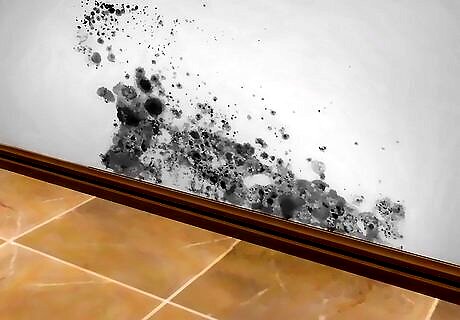
Determine to get rid of the mold. Mold growing in your home can cause serious health problems. People who are sensitive to mold can suffer from irritation in their throat, their eyes, on their skin and in their lungs. Remove the mold to create a healthier, cleaner, safer home. Mold can aggravate existing allergies. Mold has been linked to respiratory tract infections and lung disease. Mold can cause coughing, wheezing and increased effects of asthma.
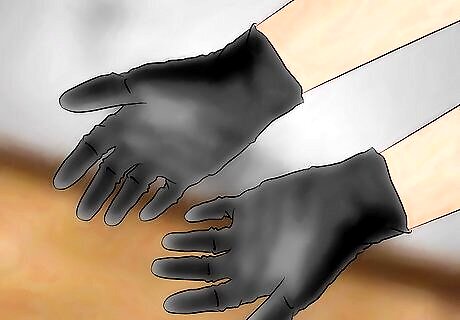
Wear non-porous gloves when cleaning with vinegar. Vinegar is a natural and organic material, but extended exposure to vinegar can cause irritation to your skin. Protect your skin by wearing gloves when you are working with vinegar.
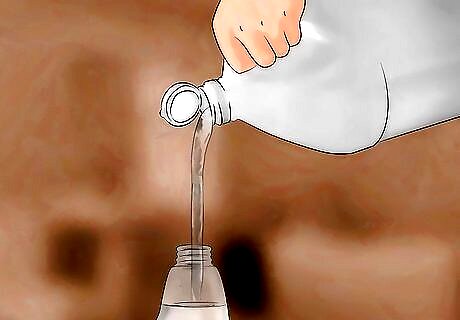
Fill a spray bottle with plain white vinegar. Do not dilute the vinegar with water. Make sure that you have enough vinegar to cover the surface you would like to clean.
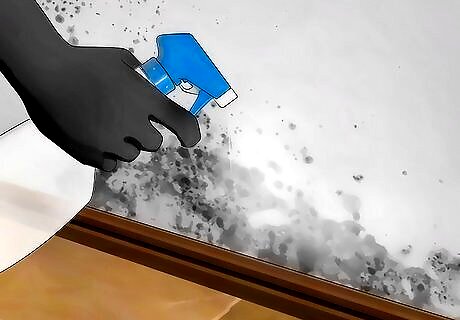
Spray the vinegar on the trouble area. Cover the area thoroughly with the vinegar. Be generous in how much you use to be sure that there is enough vinegar to attempt to break up the mold. If you do not have a spray bottle handy, you can also use a disposable cloth. Thoroughly wet the cloth with vinegar and wipe the area of mold to soak it in vinegar. EXPERT TIP "If you use vinegar to kill mold in the bathroom, don't spray it on a shower or on tiles made of unsealed stone, as it could cause etching." Marcus Shields Marcus Shields House Cleaning Professional Marcus is the owner of Maid Easy, a local residential cleaning company in Phoenix, Arizona. His cleaning roots date back to his grandmother who cleaned homes for valley residents in the 60’s through the 70’s. After working in tech for over a decade, he came back to the cleaning industry and opened Maid Easy to pass his family’s tried and true methods to home dwellers across the Phoenix Metro Area. Marcus Shields Marcus ShieldsHouse Cleaning Professional
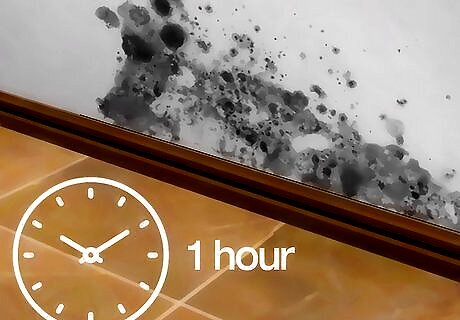
Allow the vinegar to sit for one hour. It takes a little time for the vinegar to work into the mold and break it. Give it at least an hour before you return to scrub the mold away.
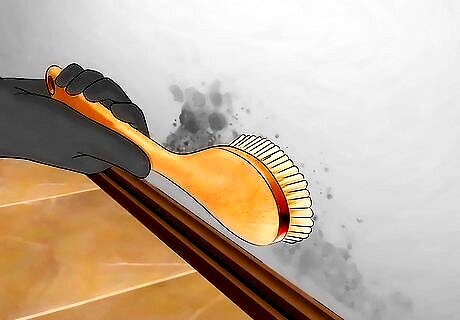
Scrub the mold away with warm water and a scrub brush. Using a brush, scrub at the area of mold which has been sitting in the vinegar. Continue to clean your brush off in warm water as you work through the moldy area. Using a scrub brush will make it easier to break up the mold, as well as keeping your skin further removed from the vinegar while you are cleaning. Find a brush that is the appropriate size for the job. You may want a larger brush to cover more surface area, or a smaller brush to reach into cracks and corners.
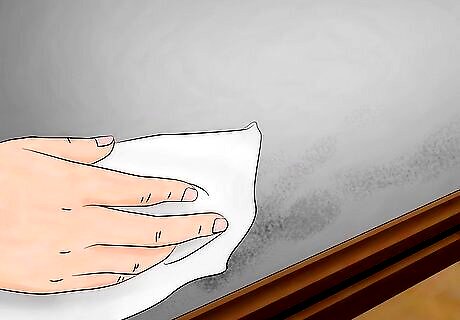
Wipe the surface clean. Once you have dislodged the mold from the surface, wipe the space clean using warm water and allow the area to dry. If the mold persists, repeat this entire process until all the mold has been removed. Vinegar will likely leave an odor, which will fade within a few hours.

Mix vinegar with other products to enhance its killing power. Vinegar is thought to kill 82% of species of mold. If this is true, that still leaves you with the possibility of 18% of persistent species. If vinegar does not seem to be cutting through your mold problem, try mixing it with borax, hydrogen peroxide, baking soda or salt. Only mix the vinegar with one of these products at a time. If it is still not working, try mixing it with another. Never mix vinegar with bleach. This creates dangerous, toxic fumes. If these combinations are not working, or you have a larger mold problem, you may need to hire a professional to remove the mold from your home. EXPERT TIP "To clean minerals and mold off a shower door, apply a mixture of baking soda and vinegar. Let it sit for 10-15 minutes, then wipe it away." Marcus Shields Marcus Shields House Cleaning Professional Marcus is the owner of Maid Easy, a local residential cleaning company in Phoenix, Arizona. His cleaning roots date back to his grandmother who cleaned homes for valley residents in the 60’s through the 70’s. After working in tech for over a decade, he came back to the cleaning industry and opened Maid Easy to pass his family’s tried and true methods to home dwellers across the Phoenix Metro Area. Marcus Shields Marcus ShieldsHouse Cleaning Professional
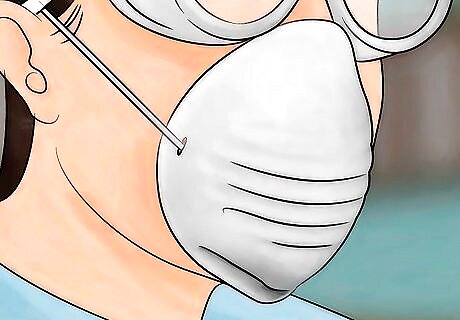
Wear an N95 mask when you are dealing with large amounts of mold. You can find an N95 mask at your local hardware store. Follow the instructions on the packaging to fit the mask tightly to your face if you are cleaning a large mold infestation. This mask is not necessary for small projects and everyday cleaning.
Preventing Mold from Returning
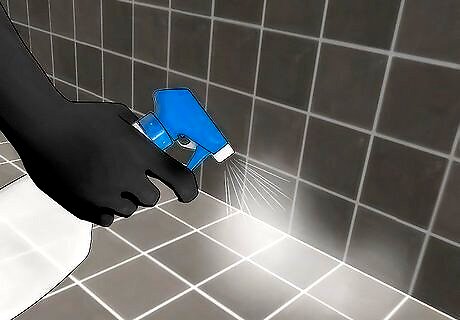
Spray vinegar and leave it to help prevent future mold growth. You do not have to wash the vinegar away. Once the surface is clean, you can spray it with vinegar and leave the vinegar on the surface to keep the mold from returning. Keep a spray bottle of vinegar in your shower and spray the surface every few days. Mop your floors with vinegar to prevent mold growth in damp areas.
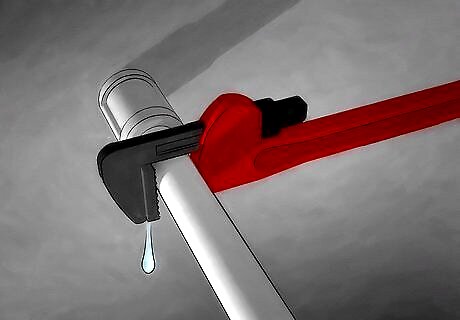
Fix leaks in your home. Leaks can occur in your roof, your plumbing and seep in through your window. Clean any spills and address these problems to keep you home dry and free of mold. Check your roof for leaks and replace the roof or fix an area which may be allowing the damp weather into your home. Fix any plumbing issues as soon as they happen to prevent water from dripping and spilling. Check the seals of your windows and replace any which are allowing dampness to get through.

Control the level of humidity in the area of mold growth. You may need to invest in a dehumidifier if you live in a humid area or have a part of your home which lacks ventilation and tends to be damp and attract mold.

Ventilate areas which can become damp. Mold thrives in damp, dark places. Allow air and sunlight into damp spaces as much as possible in order to control mold. Turn on fans when you are cooking, showering, or doing laundry. The kitchen, bathroom, and laundry room should be equipped with ventilation systems.
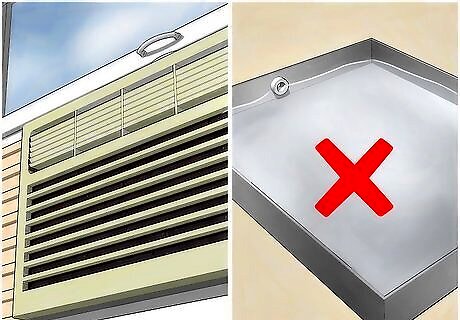
Clean your air conditioner regularly. Air conditioners contain drip pans, which gather excess water. Empty and clean this pan regularly to keep mold from forming and blowing into your home. Cut power to the air conditioner before you clean the drain pan. It is easiest to remove the water with a wet/dry vacuum to avoid spilling. Once you have removed the water, scrub away any debris or mold which may have formed in the pan before you return it.


















Comments
0 comment